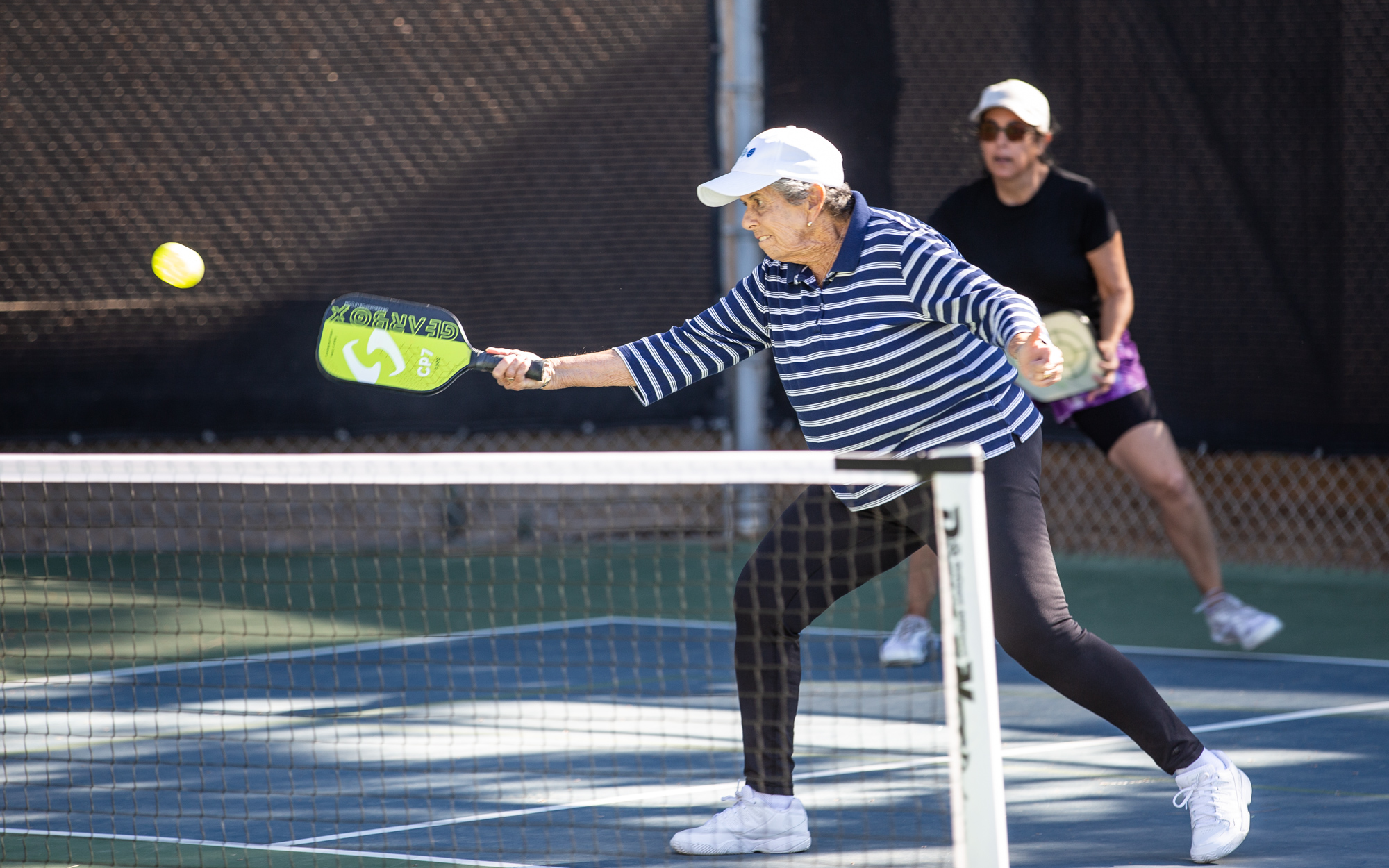
Some people just can’t get past the name: pickleball. Their minds explode thinking about it. What does it mean? Why? Just why?
I’ll save you the effort of looking it up. It’s basically just a random name. Officially, the founder’s wife thought the game reminded her of the pickle boat in crew where oarspeople were chosen from the leftovers of other boats.
Yes, pickleball is a little weird but in an endearing, offbeat way. So endearing that it’s the fastest growing sport in the United States (21% in 2020).
Leagues are forming everywhere; court availability is at a premium; and the devoted want it to become an Olympic sport.
In person, pickleball benefits from its “leftover” heritage. There’s an open casualness to it that belies a bit of competitiveness – for those so inclined. It really does attract the old, young and everyone in between.
And let’s just address the elephant on the court: There are no pickles served as snacks, but there might be the occasional Bloody Mary’s served on Sunday mornings.
If you walk up to any pickleball court, it sounds like a modest wood chopping competition. There are repetitive dull thwacks followed by a few groans (from the older folks).
As in tennis, hamstrings are regularly stretched. Unlike tennis, you can’t really swing too hard in pickleball even if you try. The wiffleball prevents it. Aerated and annoyingly non-bouncy, you can swing like hell and never have it go too far. An equivalent swing in tennis, especially at Lang Park, will launch the ball over PCH, through the Montage, and land somewhere near Treasure Island.
The wiffleball will just do a baby bounce before snuggling up against the back fence. An attractive lime green, the wiffleball is essentially dead plastic. It’s dead as it lands frustratingly short of the net. It’s dead as it skitters out of reach. More advanced players will spin it to enhance the skitter effect.
The only time it may not seem dead is if it hits you on your cheek by an overzealous opponent, leaving a wiffleball-like waffle impression.
While there is a casualness to pickleball, there is competition. You can tell the ones who take it more seriously. They have the form of retired tennis players – long strokes, overhead lobs, backhands that look like they’re slicing imported cheese.
Non-former tennis pickleballers, by contrast, look more like racquetballers. They hack, spin, deceive and are not against wearing gloves.
Regardless, there doesn’t appear to be any unnecessary rivalry on a pickleball court. More often, smiles and congratulations prevail. Sets are short – long enough to break a small sweat but short enough that you don’t need to add electrolytes to the vodka drinks.
Sally Anne Sheridan, a former tennis player, knows how to have fun and keep perspective. She’s not fast on the court but admits she’s sneaky.
“It’s a game of finesse, not power,” she said. “The pros will dink back and forth. People here play more smash ball.”
Like many other pickleballers, Sheridan and husband, Don, used to play tennis but said it became harder to find doubles partners.
Others are just glad to be out of the house.
“It saved us during COVID,” said Laura Hoffman, who plays a couple times a week.
Pickleball seems to be saving a lot of people. It’s here. It’s thriving, and thankfully, brunch is a bonus.